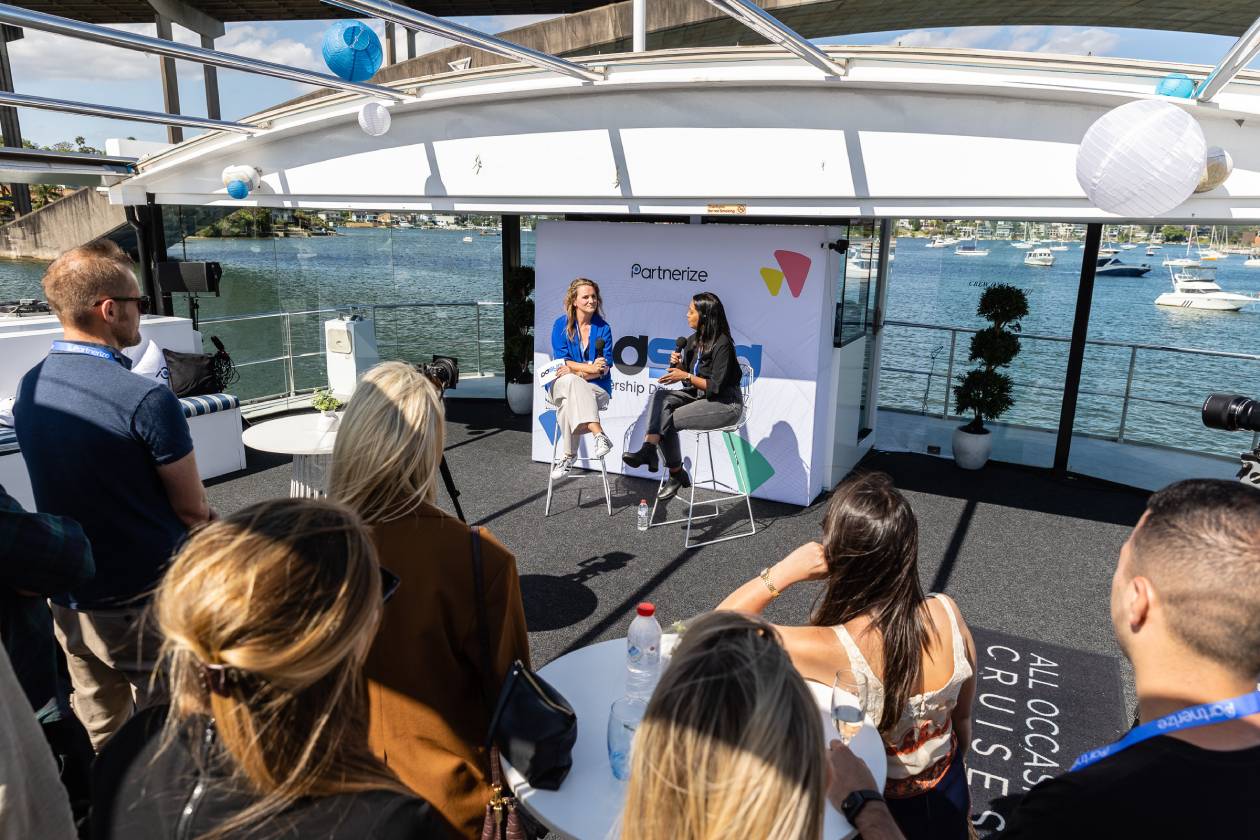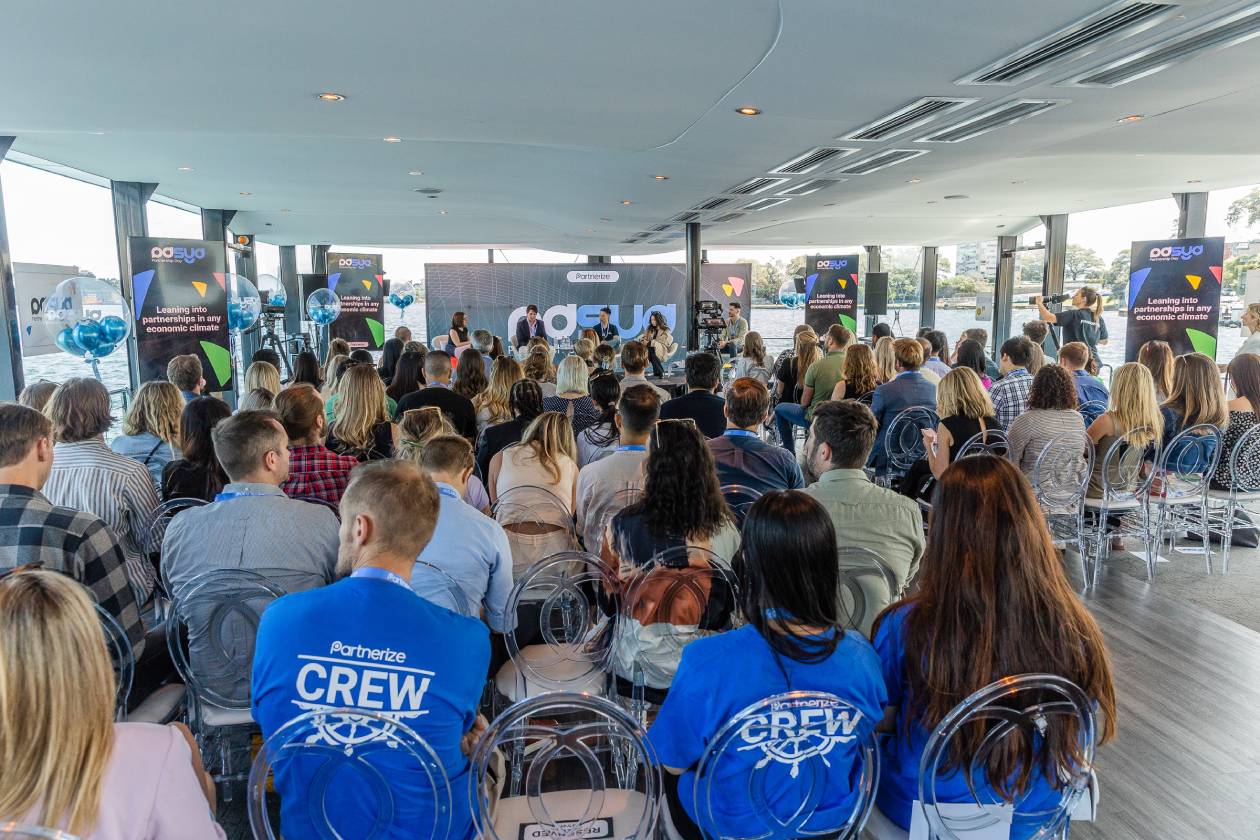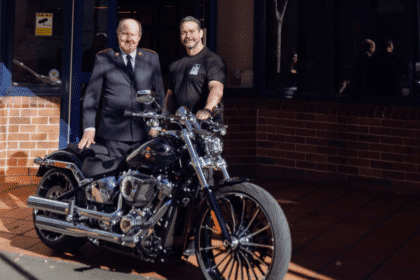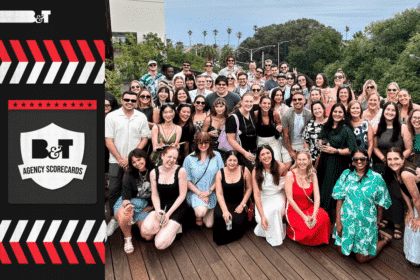Some things in life naturally go to together — bread and butter, knives and forks, and salt and pepper. However, few things form a better natural partnership than a sunny day and a boat trip around Sydney Harbour.
However, while you will frequently find knives and forks next to each other in the cutlery drawer, Partnerize managed to dodge the worst of La Niña and get a beautiful day on the Harbour for its annual Partnership Day.
Before you start thinking that this was little more than an excuse to top-up the tan and escape B&T towers, there was work to be done. Leaders from around the industry came together to discuss the current economic climate and how it will impact affiliate market and how marketers can leverage the unique power of partnerships to drive success at every step along the sales funnel.
“Partnerize serves as a market leader between publishers and advertisers. It’s really important to bring those two forces of nature in digital marketing together — literally in the same space — to network, but also to learn and confer with each other some of the opportunities and challenges they have,” Adam Brownstein, Partnerize’s general manager and senior vice president for Japan & Asia Pacific, told us.
The event also served as a chance for industry players to discuss how to “navigate a pretty tumultuous market right now,” according to Brownstein.
While many marketers will, perhaps rightly, be fretting about the economic challenges coming up in the next twelve months, Brownstein cut a relaxed figure.
“If I said to you, or any business person, ‘Hey, I can offer you a solution to something that you’re using already that is more measurable, lower in cost, and more scalable.’ You would probably say ‘Tell me more.’ And that’s what affiliate marketing does, particularly for digital marketers who want better ROI for their marketing efforts.”
In one of the panel discussions, Henry Hooper, general manager for Klook, Christopher Cheung, chief ecommerce officer for PetCulture, Troy Mulder, performance partnerships manager at THE ICONIC, and Lia Ang head of marketing for Eva, discussed why, despite existing for more than 20 years, affiliate marketing has always played second fiddle to search, social, and programmatic display.
“Affiliate marketing typically represents five per cent of people who are in the channel, sometimes 10 or 15 per cent but rarely more than 20 per cent,” explained Brownstein.
“But it’s less expensive, more dynamic, and more measurable than platforms like Google and Meta. Getting performance marketers to make the higher-ups — whether it’s the CFO or the CMO — aware of lower cost, more measurable solution is part of our mission and how we think about marketing.”
Of course, the media landscape is changing rapidly. The relationship brands and consumers have with social media platforms — notably Twitter — are shifting as users look for more authenticity. Online publishers are having to compete with streaming platforms, for instance, over affiliate deals and user attention.
But, again, Brownstein said that this is an opportunity for affiliate marketers.
“All of us are consumers, wherever our attention is, that can be monetised. It could be upper funnel content, whether it’s a blogger or an influencer, it could be mid-funnel content, anything,” he said.
“We talked a lot today about whole funnel marketing, in other words, the entire customer journey from building awareness down to actually making a transaction, whether you’re buying an outfit from THE ICONIC or a mattress from Koala.
“One of the major issues for digital marketing departments is attributing across the funnel for each conversion – how does affiliate marketing solve this challenge?
“At the same time, there are some challenges including making sure it’s all stitched together and how you can show attribution. In other words, how can I prove to you that what started with an influencer ended with cashback and coupons. That’s something helping our brands do a better job at as we look out into 2023.”










